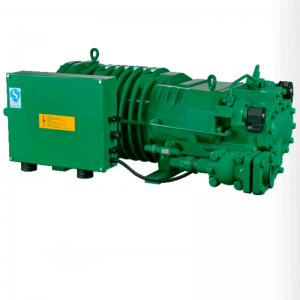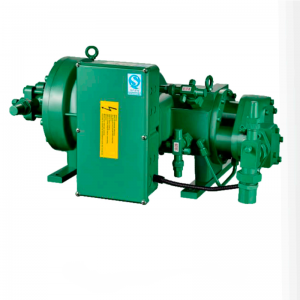The main reasons for overheating of the compressor exhaust temperature are as follows: high return air temperature, large heating capacity of the motor, high compression ratio, high condensation pressure, and improper refrigerant selection.
1. Return air temperature
The return air temperature is relative to the evaporation temperature. In order to prevent liquid backflow, return air pipelines generally require a return air superheat of 20°C. If the return air pipeline is not well insulated, the superheat will far exceed 20°C.
The higher the return air temperature, the higher the cylinder suction and exhaust temperatures. For every 1°C increase in return air temperature, the exhaust temperature will increase .

2. Motor heating
For return air cooling compressors, the refrigerant vapor is heated by the motor when flowing through the motor cavity, and the cylinder suction temperature is increased again.
The heat generated by the motor is affected by power and efficiency, while the power consumption is closely related to displacement, volumetric efficiency, working conditions, friction resistance, etc.
For return air cooling semi-hermetic compressors, the temperature rise of the refrigerant in the motor cavity ranges from 15°C to 45°C. In air-cooled (air-cooled) compressors, the refrigeration system does not go through windings, so there is no motor heating problem.
3. The compression ratio is too high
The exhaust temperature is greatly affected by the compression ratio. The greater the compression ratio, the higher the exhaust temperature. Lowering the compression ratio can significantly reduce the exhaust temperature by increasing the suction pressure and lowering the exhaust pressure.
The suction pressure is determined by the evaporation pressure and the suction line resistance. Increasing the evaporation temperature can effectively increase the suction pressure, quickly reduce the compression ratio, and thereby reduce the exhaust temperature.
Practice shows that reducing the exhaust temperature by increasing the suction pressure is simpler and more effective than other methods.
The main reason for excessive exhaust pressure is that the condensation pressure is too high. Insufficient cooling area of the condenser, scale accumulation, insufficient cooling air volume or water volume, too high cooling water or air temperature, etc. can lead to excessive condensation pressure. It is very important to select the appropriate condensation area and maintain sufficient cooling medium flow.
The high-temperature and air-conditioning compressors are designed to operate with a low compression ratio. After being used for refrigeration, the compression ratio increases exponentially, the exhaust temperature is very high, and the cooling cannot keep up, causing overheating. Therefore, avoid using the compressor beyond its range and operate the compressor below the minimum possible compression ratio. In some cryogenic systems, overheating is the primary cause of compressor failure.
4. Anti-expansion and gas mixing
After the suction stroke begins, the high-pressure gas trapped in the cylinder clearance will undergo a de-expansion process. After de-expansion, the gas pressure returns to the suction pressure, and the energy consumed to compress this part of the gas is lost during de-expansion. The smaller the clearance, the smaller the power consumption caused by anti-expansion on the one hand, and the larger the suction volume on the other hand, thus greatly increasing the energy efficiency ratio of the compressor.
During the de-expansion process, the gas contacts the high-temperature surfaces of the valve plate, piston top and cylinder top to absorb heat, so the gas temperature will not drop to the suction temperature at the end of de-expansion.
After the anti-expansion is completed, the inhalation process begins. After the gas enters the cylinder, on the one hand it mixes with the anti-expansion gas and the temperature rises; on the other hand, the mixed gas absorbs heat from the wall surface and heats up. Therefore, the gas temperature at the beginning of the compression process is higher than the suction temperature. However, since the de-expansion process and the suction process are very short, the actual temperature rise is very limited, generally less than 5°C.
Anti-expansion is caused by cylinder clearance and is an unavoidable shortcoming of traditional piston compressors. If the gas in the vent hole of the valve plate cannot be discharged, there will be reverse expansion.
5. Compression temperature rise and refrigerant type
Different refrigerants have different thermophysical properties, and the exhaust gas temperature will rise differently after undergoing the same compression process. Therefore, for different refrigeration temperatures, different refrigerants should be selected.
6. Conclusions and suggestions
When the compressor is operating normally within the range of use, there should be no overheating phenomena such as high motor temperature and high exhaust steam temperature. Compressor overheating is an important fault signal, indicating that there is a serious problem in the refrigeration system, or that the compressor is improperly used and maintained.
If the root cause of compressor overheating lies in the refrigeration system, the problem can only be solved by improving the design and maintenance of the refrigeration system. Replacing a new compressor cannot fundamentally eliminate the overheating problem.
Guangxi Cooler Refrigeration Equipment Co.,Ltd.
Tel/Whatsapp:+8613367611012
Email:karen02@gxcooler.com
Post time: Mar-13-2024





